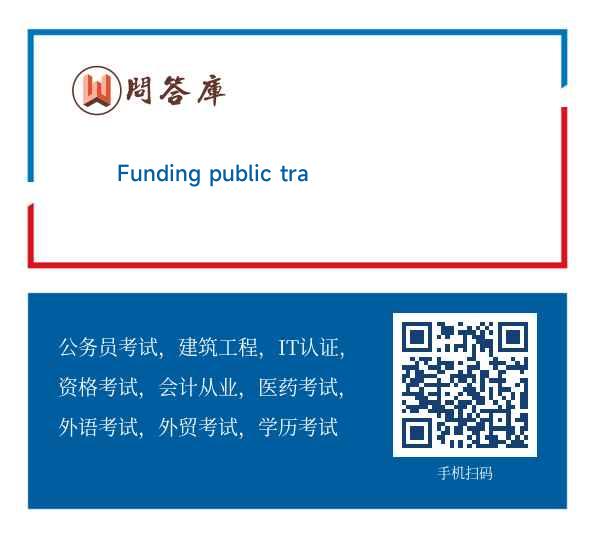Funding public transit is one of the biggest problems facing cities today. Often the tro
问题详情
Funding public transit is one of the biggest problems facing cities today. Often the trouble is that a few high-cost, low-ridership routes drag down an entire system. That puts policymakers in a tough spot. They might eliminate these unprofitable lines, that has【M1】______ been suggested before, but in doing so they would harm a considerate number of people who rely on that service as their【M2】______ primary mode of transportation. Over at New Geography, Steve Lafleur revives the debate and argues that low fares are the part of the reason transit lines are【M3】______ struggling. In response, he offers an admittedly "controversial" solution: "Transit should operate on a for profit basis and its prices should closely reflect market forces—if it means that transit fares【M4】______ increase." The idea of increasing ridership by raising fares is not with【M5】______ some recent precedent. Writing last week at The New York Times Opinionator blog, Lisa Margonelli points to a study from earlier this year comparing transit ridership in Germany and the United States. Over the same period of time, German transit agencies grew ridership while doing something similar in what Lafleur【M6】______ proposes—namely, increasing fares and slashing service. More important than fare changes were the limits【M7】______ simultaneously imposed on car travel. While German transit agencies did their best to attract riders to a higher-quality service, the government implemented a number of policies that made driving "less conveniently and more costly". In other words,【M8】______ high fares did lead to greater ridership on German transit, but only【M9】______ when coordinating with harsh automobile policies—not in isolation.【M10】______
【M1】
此题为多项选择题。请帮忙给出正确答案和分析,谢谢!
